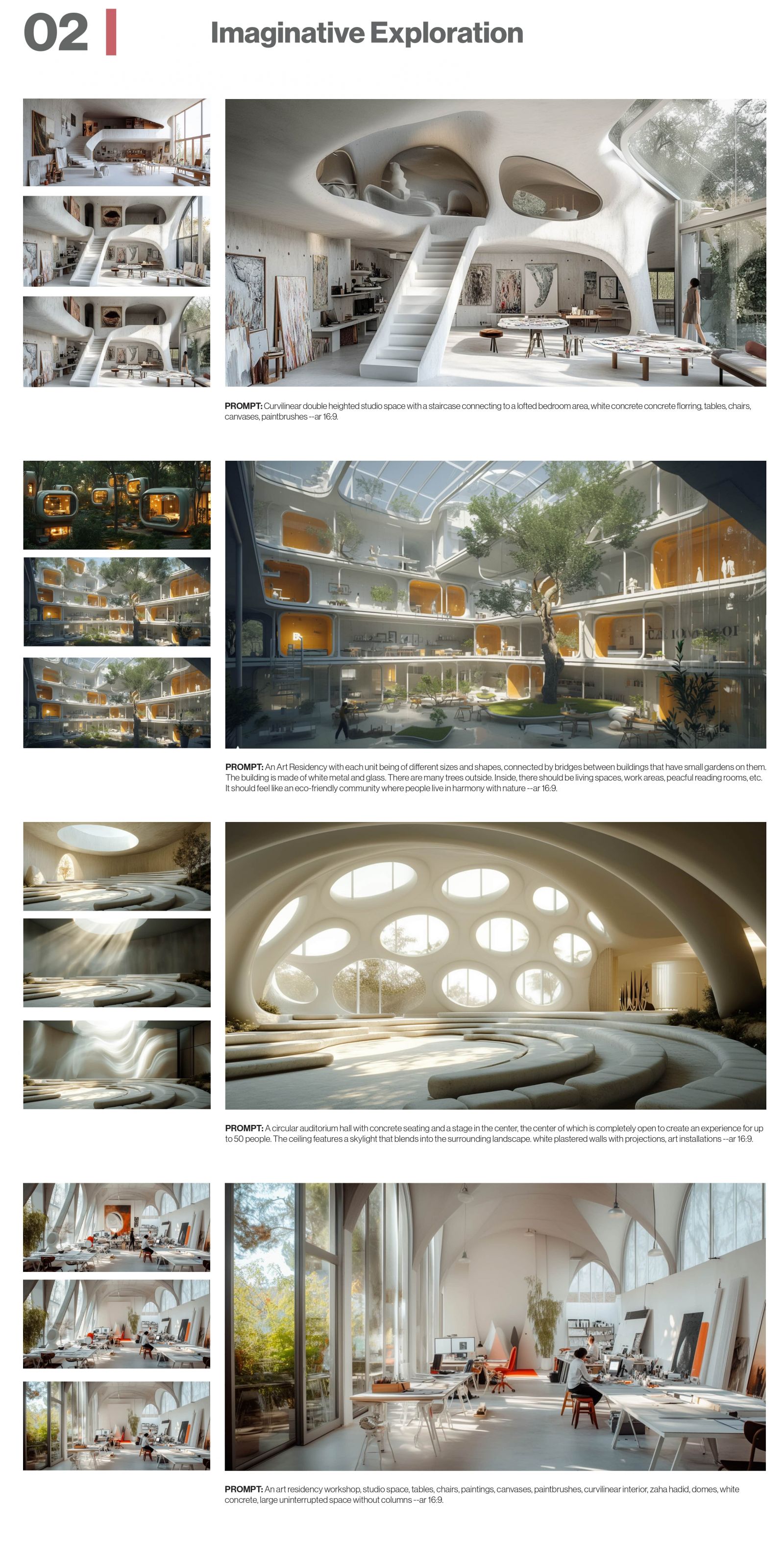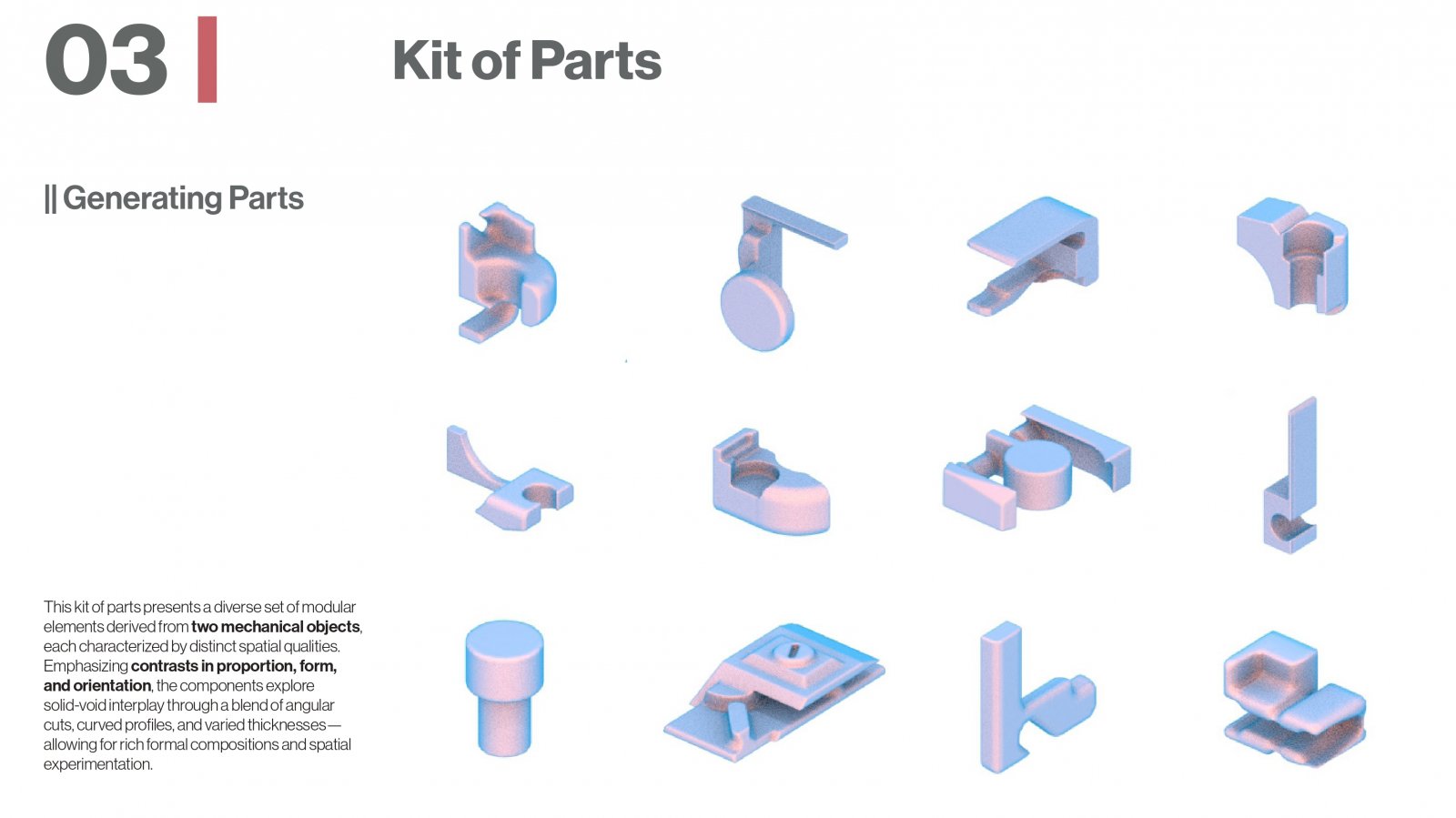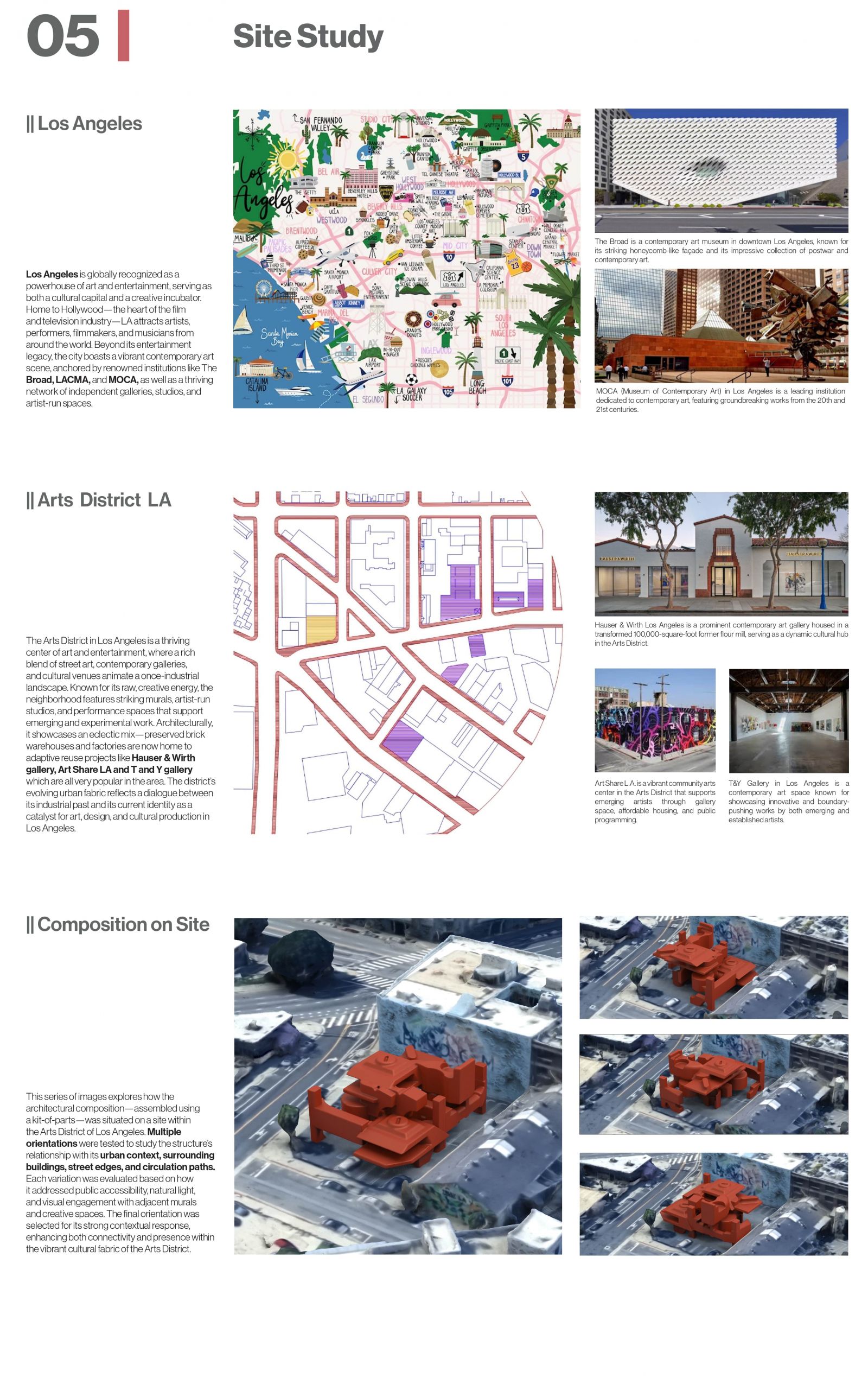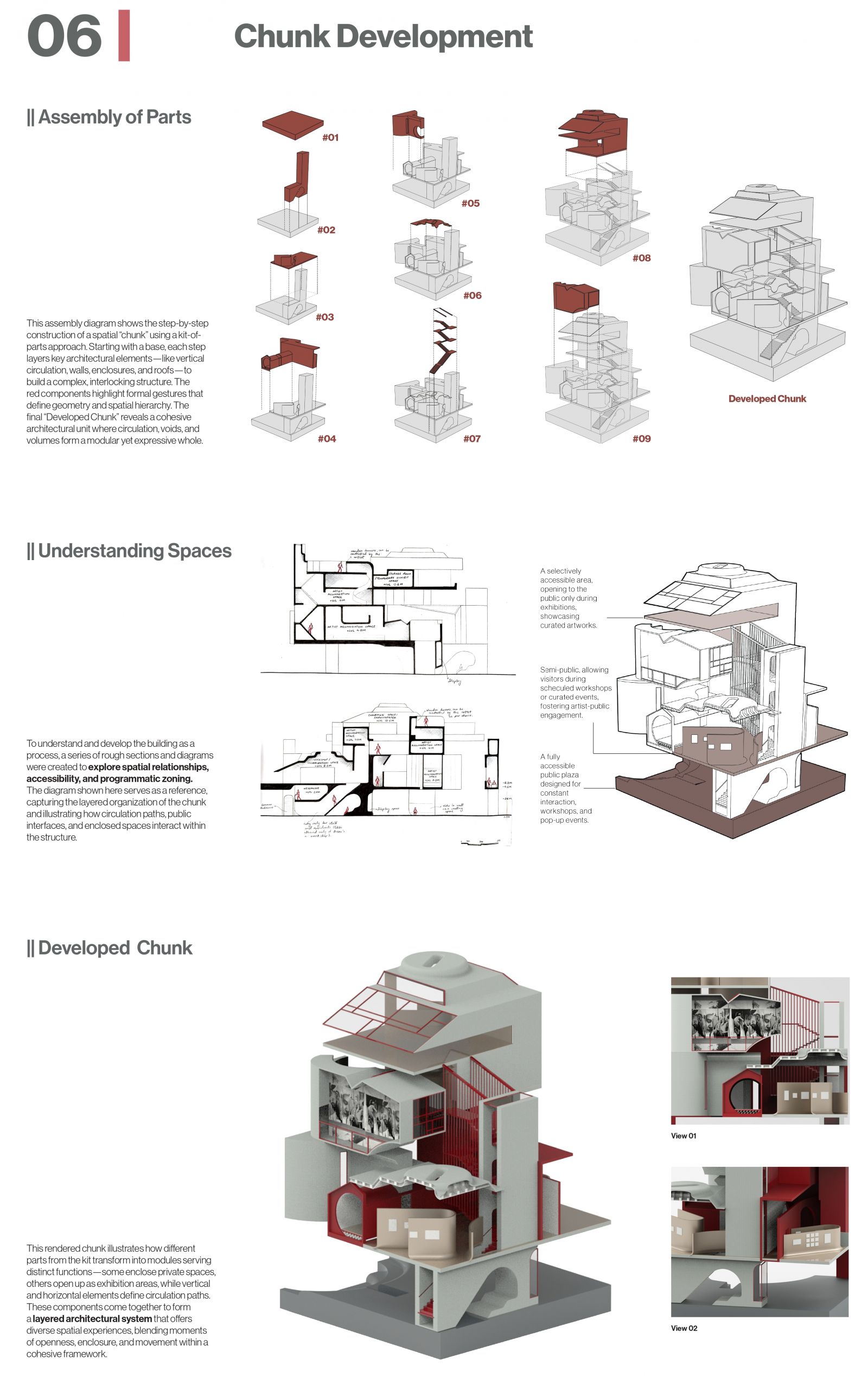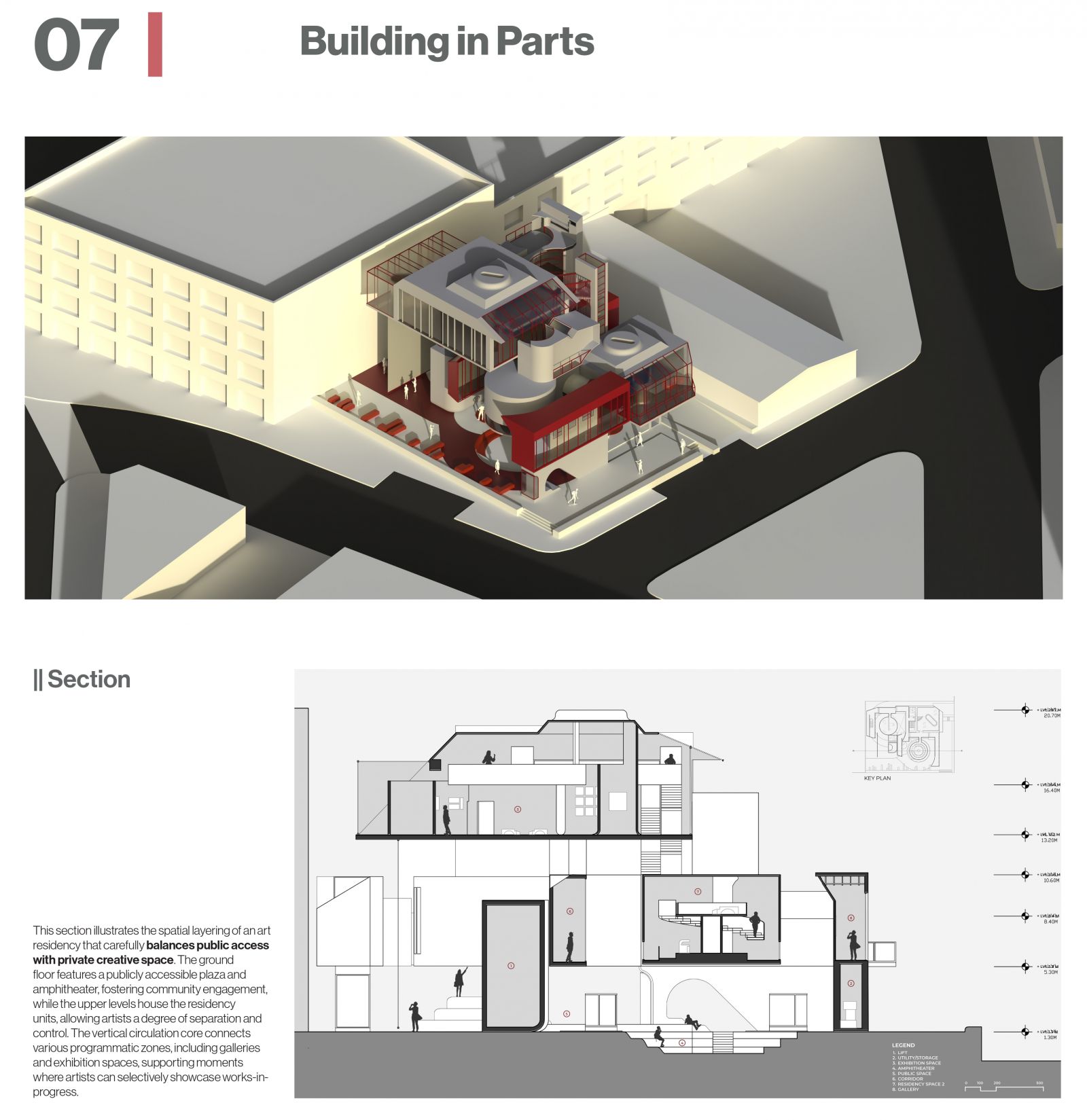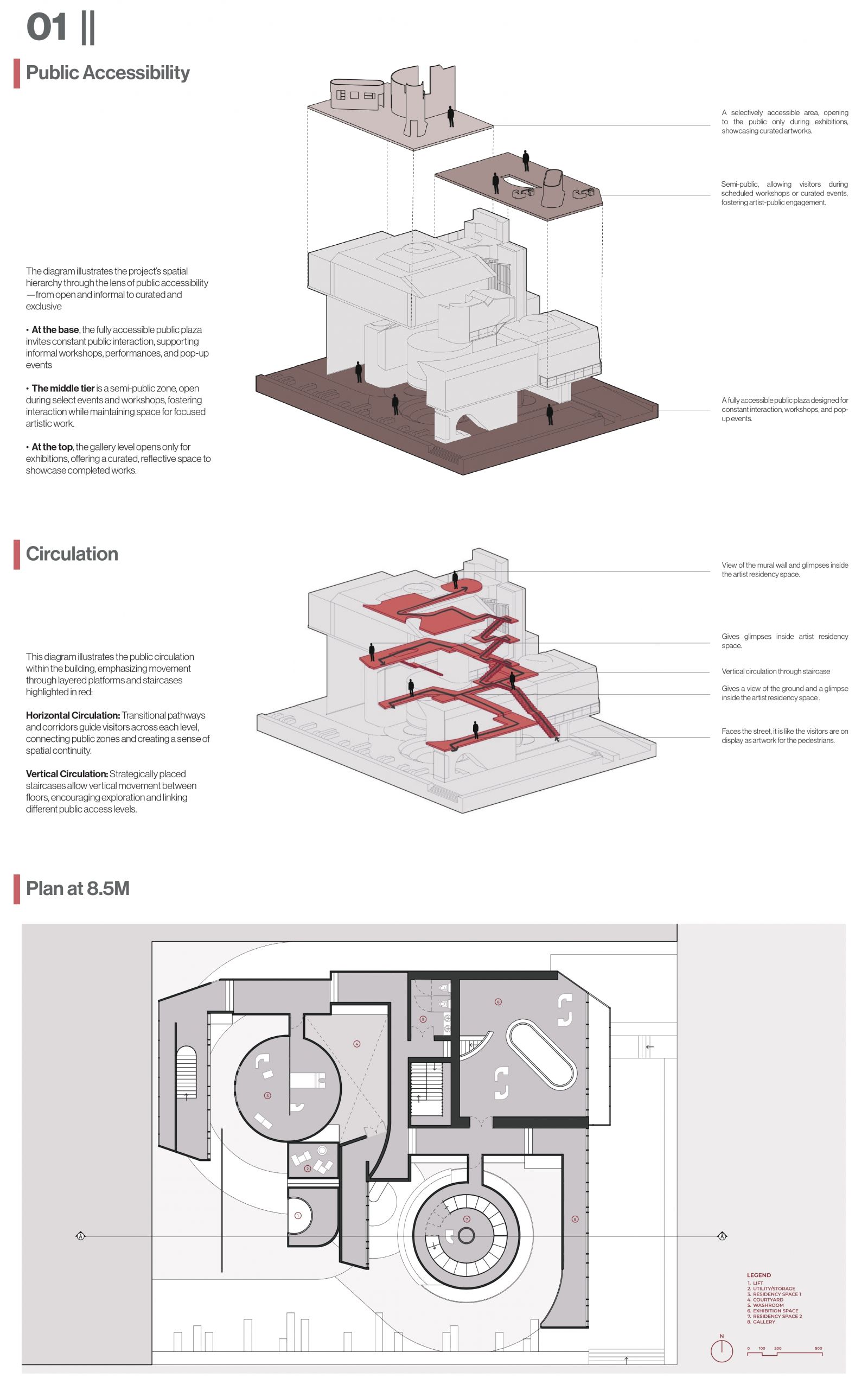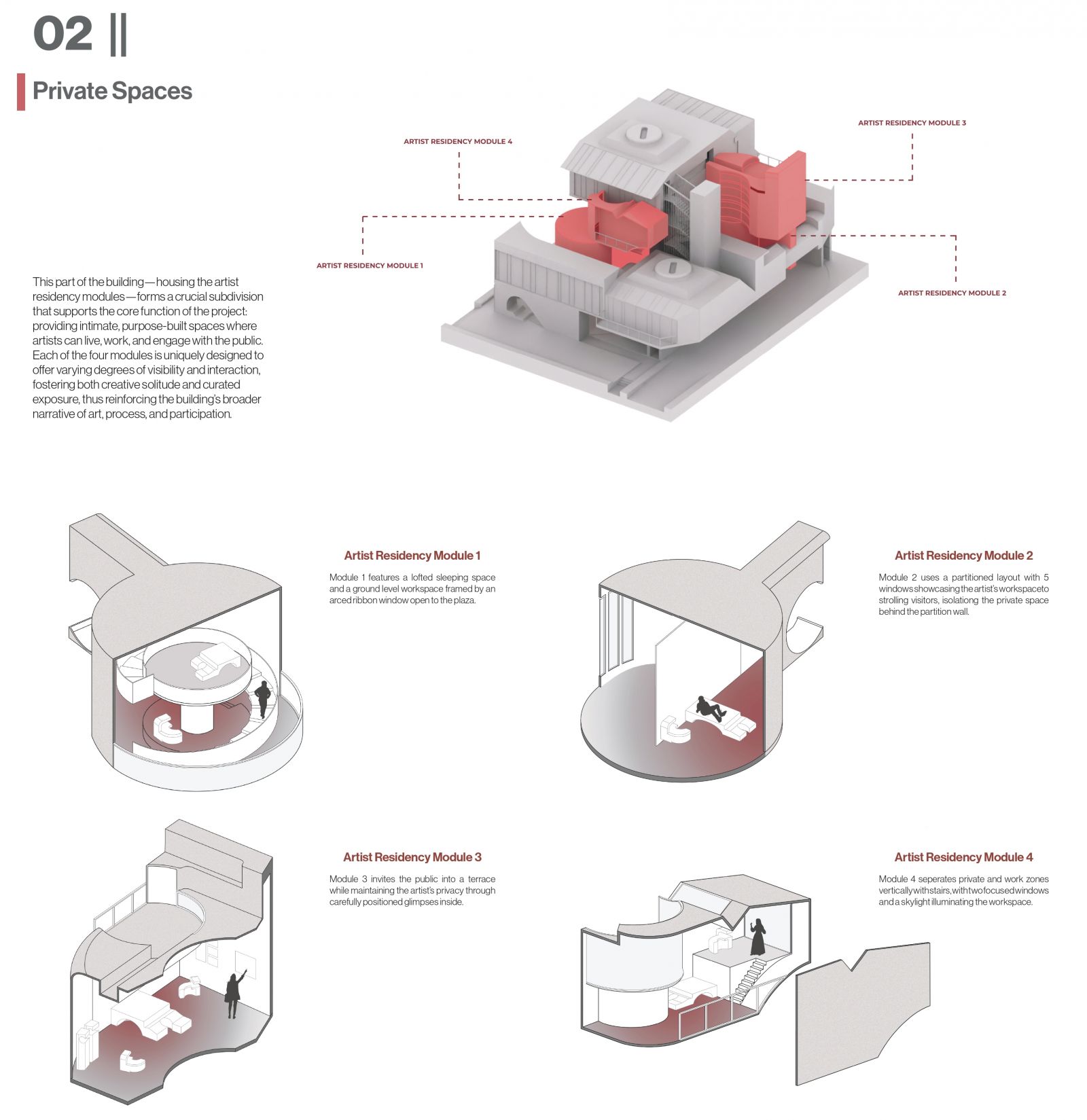Your browser is out-of-date!
For a richer surfing experience on our website, please update your browser. Update my browser now!
For a richer surfing experience on our website, please update your browser. Update my browser now!
This art residency project, set in the heart of the Los Angeles Arts District, reimagines the boundaries between art-making and public engagement. The design features an interactive facade, inviting curiosity while revealing glimpses of the creative process within. Rather than separating production from exhibition, the architecture encourages fluid transitions between viewing and creating, process and presentation. Public plazas and layered circulation paths allow visitors to engage with works-in-progress, while private studios offer focused retreat for resident artists. Rooted in the vibrant, collaborative energy of the Arts District, the project reflects the area's history of adaptive reuse and artistic innovation—making the building itself an evolving canvas and cultural interface.

